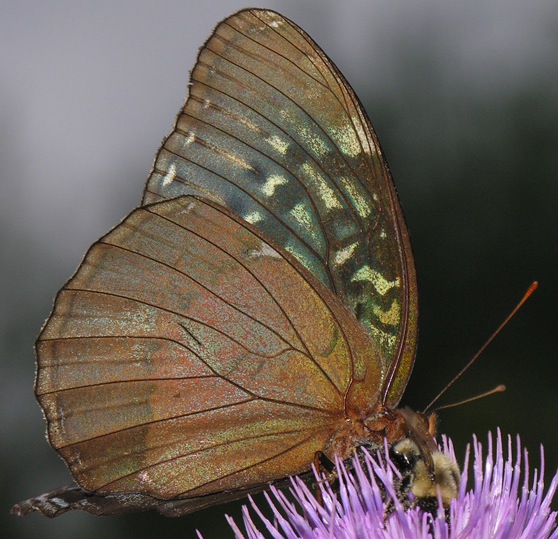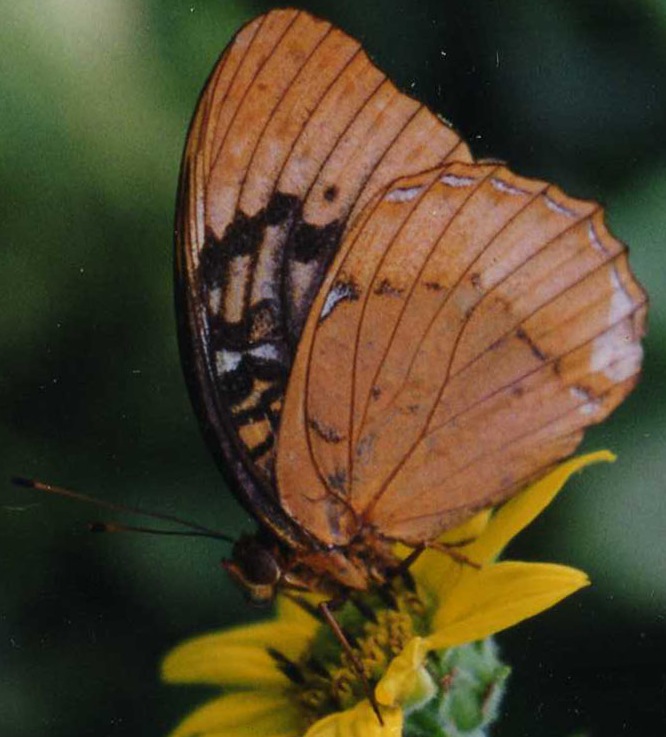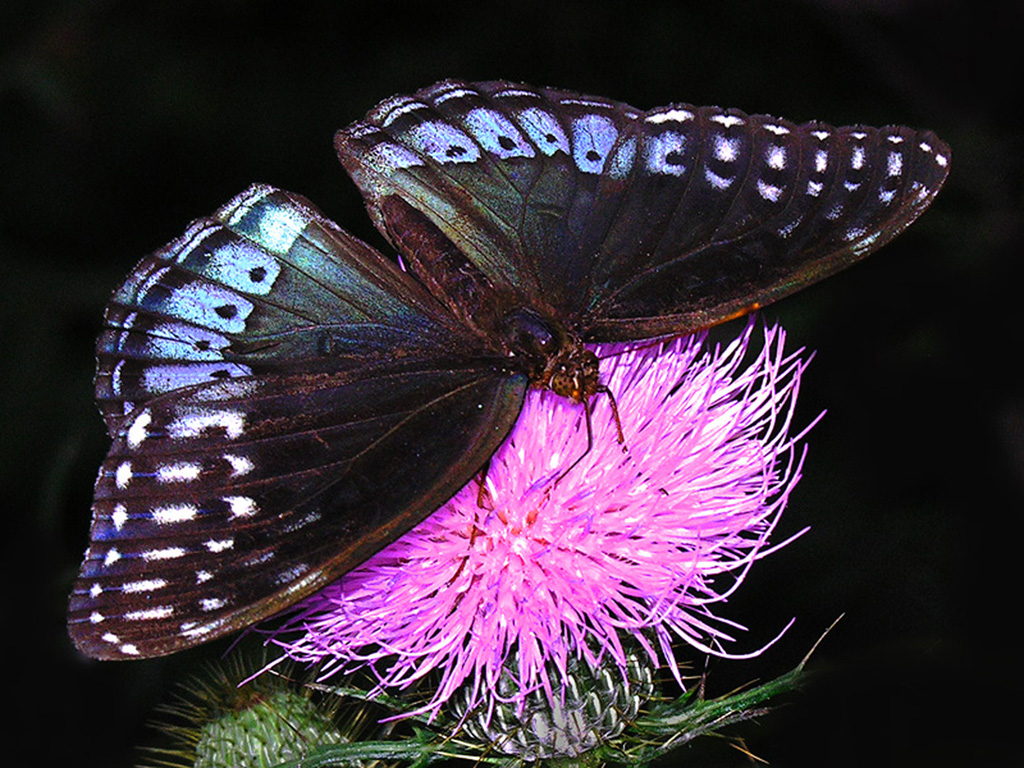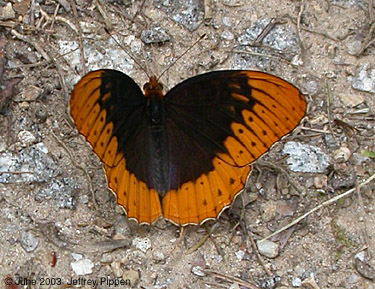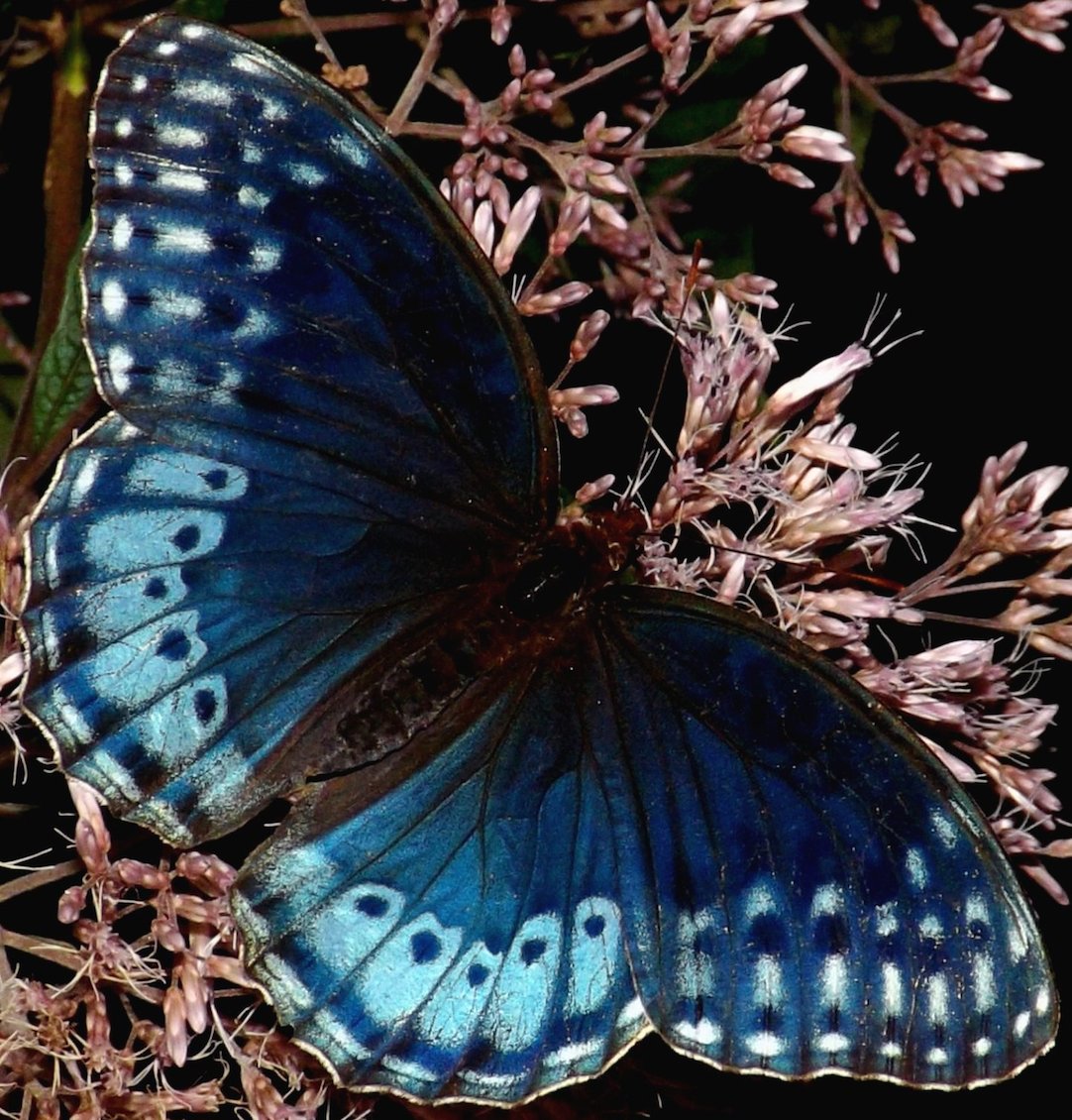|
| Common Name | Diana Fritillary by Nancy Baldwin => male, McDowell Co. 6-26-97
[View PDF]
 Click to enlarge Click to enlarge
[Google Images] GBIF [Global Distribution ] BoA [Images ] iNaturalist |
| Scientific Name | Argynnis diana
|
| Link to BAMONA species account. |
| Map | Click on a county for list of all database records for the species in that county.
 |
| Distribution | DISTRIBUTION: Throughout the Mountains and adjacent foothills, and in the western third of the Piedmont. Formerly in the eastern Piedmont. A record in 2007 from Iredell County, and in Mecklenburg County in 2011, extend the range eastward. A record from Rowan County in 2016 further extends the range eastward. An undoubtedly storm-blown, worn male was seen out of range in Gates County in 2023, by Signa and Floyd Williams; this is not to be considered as a range extension.
|
| Abundance | ABUNDANCE: Uncommon to locally fairly common in the Mountains; rare to locally uncommon in the extreme upper Piedmont (foothills), but very rare in the Piedmont below about 1200 feet in elevation. Certainly absent now from the eastern Piedmont (i.e., old records from Nash and Wake counties).
|
| Flight | FLIGHT PERIOD: A single brood; early or mid-June to early October in the Mountains, but the flight in the Piedmont begins in late May or early June. Males fly mainly into mid- or late August; females fly from late June to September but are most frequently seen in September. (It can be difficult to see both a male and a female on the same day.) As with all Argynnis (formerly Speyeria) species, there appears to be some aestivation of individuals after the "peak" in June and July. Perhaps with global warming, the emergence date of the species is advancing in recent years -- from mid-June to often now in early June in the Mountains.
|
| Habitat | HABITAT: Generally in small openings or edges of montane forests. Most often seen along sunlit, wooded dirt roads. This species is not typically found in the extensive fields and meadows characteristic of most of the other fritillaries. It appears to be more numerous from 3500 feet downward; it is not generally seen on upper mountain slopes.
|
| Plants | FOOD AND NECTAR PLANTS: The food plants are violets (Viola spp.), presumably those found mainly on wooded slopes and in bottomlands. The species does not nectar as frequently as do other fritillaries; milkweeds (Asclepias spp.) and Joe-pye-weeds (Eutrochium spp.) are the most commonly used nectar plants. Males favor milkweeds, which bloom mainly in June and July; the females favor tall composites -- mainly pink- or purple-flowering species such as Joe-pye-weeds, ironweeds (Vernonia spp.), and thistles (Cirsium spp.) -- which bloom mainly after milkweeds are finished, in late August and in September.
|
| Comments | COMMENTS: This beautiful, sexually-dimorphic butterfly is not as numerous as one might expect from looking at the county range map, and also based on its habitat, which is abundant. Even so, I have seen as many as 19, all females, in one day. And, 32 adults were seen by several parties on the Transylvania County butterfly count in 2011, by far a state high count total. Your best bet to find females is to drive along mountain roads from late August to mid-September and concentrate on blooming Joe-pye-weeds along the roadsides. Small openings with blooming Common Milkweed (Asclepias syriaca) can be productive in midsummer, for males. I have yet to see a Diana Fritillary more than about 50 feet from a forest edge; in fact, when disturbed, the butterflies often fly to the forest edge and often land several dozen feet off the ground.
In 2020, NatureServe surprisingly moved the Global Rank from the former G3G4 to a now more threatened G2G3, which seems too extreme. The NC State Rank is S3S4, and the Global Rank should not be moved to a rarer rank than any State Rank. This is especially the case as the following states have a rank at least S2S3 or lower (less rare): AR (S2S3), GA (S3), NC (S3S4), SC (S3?), TN (S3), and VA (S3) -- based on NatureServe Explorer, as of late January 2024. And, in NC it is only on the Watch List, not tracked (yet) as Significantly Rare.
|
State Rank | S3S4 | | State Status | W |
Global Rank | G2G3 [G3G4] | | Federal Status | |
| Synonym | Speyeria diana
|
| Other Name | Diana
|
|
|

 >>
>>